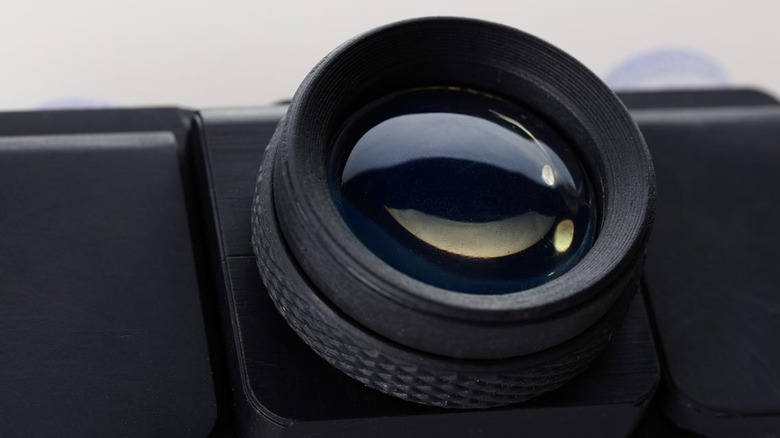SLO Film Camera Is 3D Printed From Scratch - Including The Lens
3D-printing technology has been used to create everything from bio items like eye cells to large structures including concrete houses. Some items are more functional than others, but any success serves as a proof-of-concept showing a particular thing can be done, and the work of designer Amos Dudley is no exception. Detailed on his blog in recent days is a project in which Dudley successfully creates a film camera from scratch using nothing but a 3D-printer... and this includes the lens itself, which is functional (though not terribly suitable for the task).
A film camera is a fairly simple device — it requires a dark box in which the film is located, gears that pull the film past the shutter, a button to trigger the shutter, and, of course, the shutter itself and the corresponding lens. As Dudley detailed on his blog, the camera was created first using a 3D mockup with each part made as an individual component. He then printed these components using various materials, with the shutter and lens modules in particular being swappable for future upgrades.

The lens is the hard part, at least per Dudley's writeup — it is made of resin rather than acrylic, which limits the ways in which it can be polished. If not polished adequately, light can't be concentrated properly and images will end up fuzzy or blurry. He initially polished the resin lens by hand for nearly 6 hours, but couldn't reach the level necessary for taking clear pictures. Machine polishing soon proved inadequate, too.
From there, he decided to dip the resin lens in epoxy and then, after curing the epoxy with UV light, polish that. Though the resulting lens still can't produce very clear images, it is adequate enough to produce visually discernible photos, counting as a victory.
The shutter, by all accounts, was also tricky to make, and Dudley ended up settling for a two-button arrangement that alternates opening and closing the shutter. While the camera isn't sophisticated enough to have a manual shutter speed didal, the two-button arrangement can be used for long exposures by only pressing one button half-way down.
Check out Dudley's blog for the entire writeup, as well as downloads of the 3D files.
